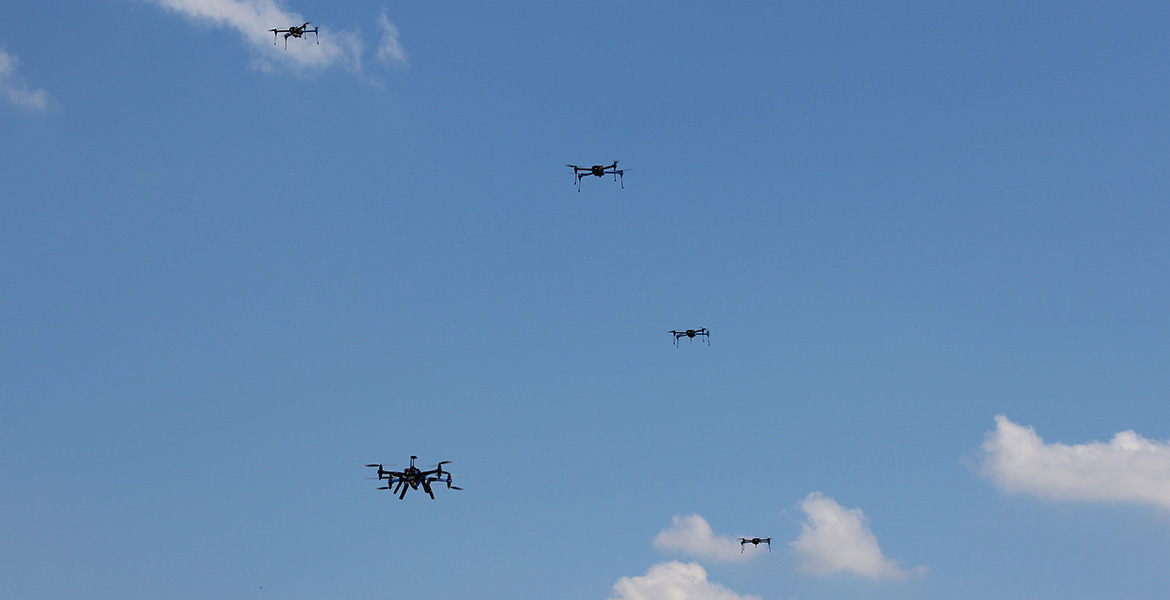
Faruque selected for Navy research award
Friday, May 31, 2019
Oklahoma State University’s Dr. Imraan Faruque was selected as a 2019 Office of Naval Research Young Investigator. His project was one of 25 selected from 260 applications. The honor brings $250,000 per year for two years with an option to extend the program for a third year.
Faruque’s research aims to improve control possibilities for unmanned aerial vehicles flown in groups by studying insects — aerial acrobats who can fly en masse while successfully responding to each other and changes in the environment. His team hopes to take UAV swarms away from pre-programmed groups where every unit flies on a set trajectory and transition to a system where each UAV responds to others and external disturbances.
“One of the big challenges in fielding unmanned aerial vehicles today is how to provide computationally efficient and robust sensing and feedback to enable a practical swarm,” he said. “Some of the best examples of aerial swarms are found in nature, and insects in particular are able to accomplish this with limited neural material.”
Biological responses, though, are inconsistent with current engineering approaches such as collision avoidance, maintaining a consistent speed throughout the group and formation of the group itself. A common hypothesis is that insects swarm visually and Faruque said it’s not obvious that the most well-quantified behaviors correspond to current engineering principles. His team recently published a technique to measure flight trajectories of insects’ wing and body motions using high-speed video analysis. The results are used to create a model of the insect’s “onboard flight controller.
“We interpret that model by reference to the basic physics of insect flight to extract a set of engineering design rules that can translate this strategy to engineered autopilots, like those on board commercial quadcopters, or drones,” he said.
Faruque is honored to be selected and excited about the research to follow.
“I am grateful to the community that makes this kind of research possible, from my collaborators internationally to the students in my lab,” he said. “I am enthusiastic about the future of interdisciplinary science, especially the connections between biology and aerospace engineering. I’m ecstatic to be able to work on a project that touches on so many fundamental questions about how to enable aerial swarms, and does so in a way that is both practical and abstract. It’s exciting to be involved in understanding how nature swarms, and in how we can translate those techniques to engineered systems. Our group is growing, especially our graduate students, and it’s encouraging to see how our students engage with these fundamental questions, to watch them partner with my collaborators to solve these fundamental aerospace control challenges.”
Dr. Kenneth Sewell, vice president of research at OSU, said the ONR Young Investigator award will allow Faruque to accelerate his research.
“ONR refers to their Young Investigator designees as the ‘best and brightest.’ In Dr. Faruque’s case, I couldn’t agree more,” Sewell said. “His expertise in developing biologically inspired autonomous flight control methods has added critical capabilities to OSU’s excellence in unmanned aerial systems.”
MEDIA CONTACT: Shannon G. Rigsby | Public Information Officer | 405-744-9081 | shannon.rigsby@okstate.edu
